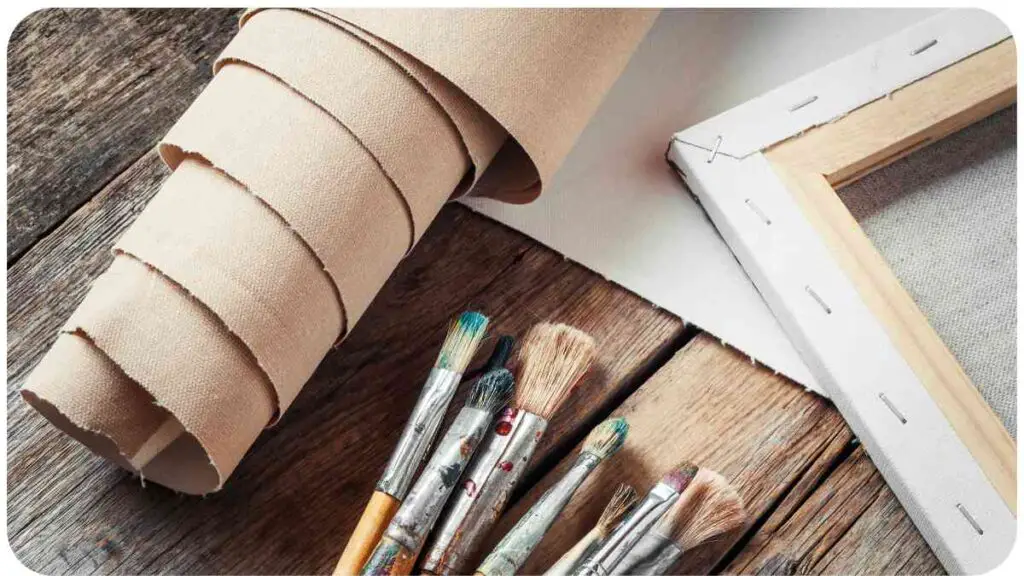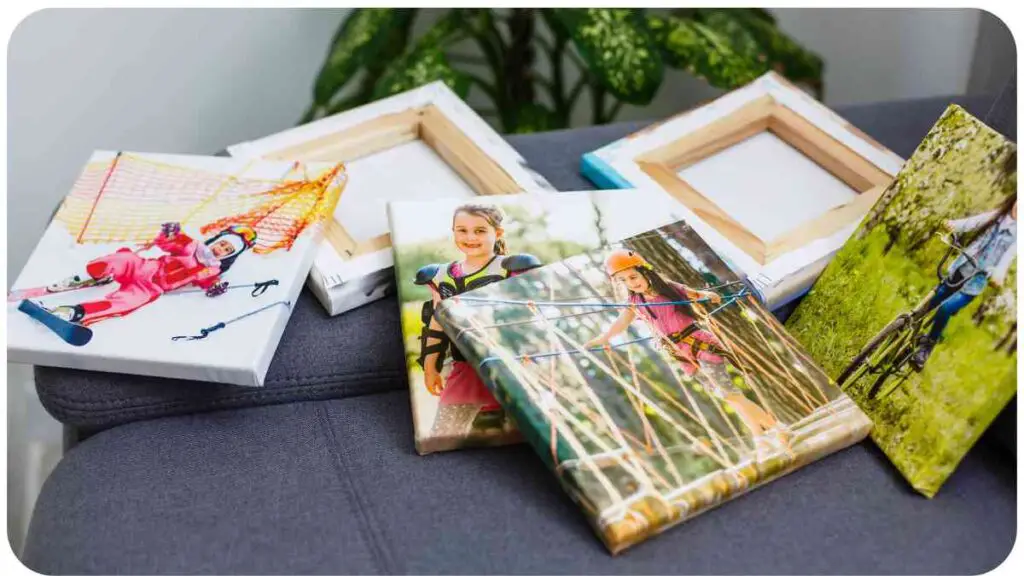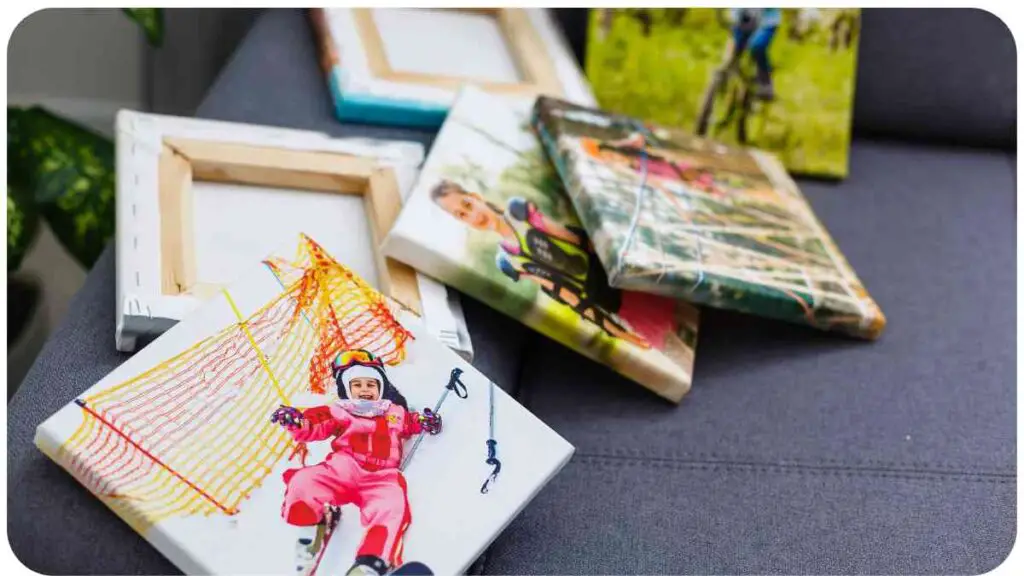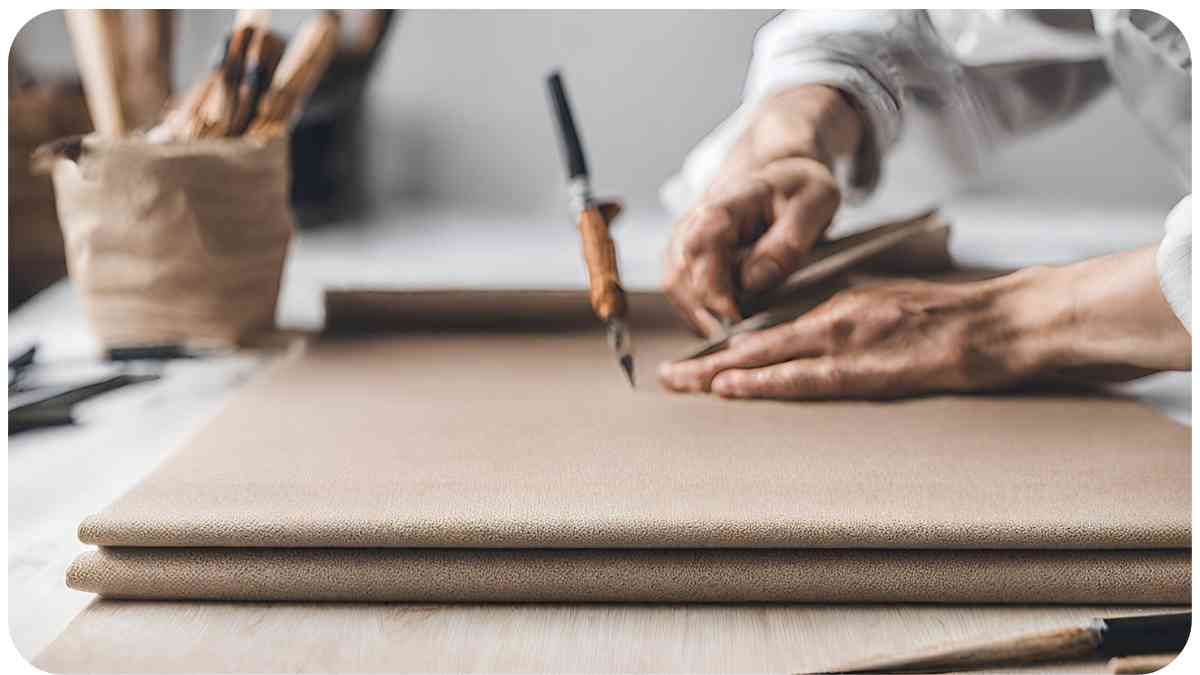Welcome to our guide on fixing canvas stretching issues! If you’re an artist or someone who enjoys displaying canvas artwork, you’ve likely encountered the frustration of a canvas not stretching properly.
Whether it’s misaligned stretcher bars, uneven tension, or wrinkles and sagging, these issues can detract from the beauty of your artwork.
But fear not! In this article, we’ll walk you through the process of identifying and fixing common canvas stretching problems, ensuring your artwork looks its best every time.
| Key Takeaways |
|---|
| Proper canvas stretching is crucial for maintaining the appearance of artwork. |
| Common canvas stretching issues include misaligned stretcher bars, uneven tension, and wrinkles or sagging. |
| To fix canvas stretching problems, gather the necessary tools and materials such as a staple gun, canvas pliers, and level, and follow a step-by-step guide. |
| Prevent future canvas stretching issues by using high-quality materials, storing artwork in a stable environment, and regularly inspecting stretched canvases for signs of damage or tension loss. |
| Additional resources and further reading materials are available for those interested in learning more about canvas stretching techniques, canvas preparation essentials, and methods for maintaining optimal tension in stretched canvases. |
2. Understanding Canvas Stretching

Before we dive into solutions, let’s briefly discuss what canvas stretching is and why it’s important. Canvas stretching refers to the process of tightly stretching canvas fabric over a wooden frame, known as stretcher bars, and securing it in place.
This creates a flat and taut surface ideal for painting or displaying artwork. Proper stretching not only enhances the appearance of the artwork but also helps prevent sagging and warping over time.
Understanding the nuances of paper for watercolor is essential for artists. Different types comprehensive guide offer diverse textures and absorbencies, impacting the final artwork significantly. It’s crucial to select the right paper to achieve desired results.
3. Common Issues with Canvas Stretching

Misaligned Stretcher Bars
Misaligned stretcher bars occur when the wooden frame supporting the canvas is not properly aligned, resulting in uneven tension and a distorted appearance. This issue often arises during the stretching process if the bars are not assembled accurately.
| Common Causes of Misaligned Stretcher Bars |
|---|
| – Incorrect assembly of stretcher bars |
| – Uneven stretching of canvas fabric |
| – Warping or damage to stretcher bars |
Uneven Tension
Uneven tension occurs when the canvas fabric is not stretched uniformly across the frame, leading to bulges or dips in the surface. This can create visible distortions in the artwork and compromise its overall aesthetic.
When debating between stretched and rolled canvas, consider your artistic preferences. Do you really need both? Stretched canvases offer immediate use, while rolled canvases provide flexibility in storage and transportation. Understanding their differences helps artists make informed choices.
| Factors Contributing to Uneven Tension |
|---|
| – Inadequate stretching technique |
| – Differences in canvas fabric tension |
| – Improper placement of staples |
Wrinkles or Sagging
Wrinkles or sagging in the canvas fabric can detract from the appearance of artwork, creating unsightly creases and distortions. This issue is often caused by inadequate stretching or environmental factors such as humidity.
| Common Causes of Wrinkles or Sagging |
|---|
| – Insufficient tension during stretching |
| – Exposure to high humidity or moisture |
| – Poor-quality canvas fabric |
4. Tools and Materials Needed
Before you begin fixing your canvas stretching issues, gather the following tools and materials:
- Staple gun
- Staples
- Rubber mallet
- Canvas pliers
- Utility knife
- Level
- Canvas stretcher bars (if replacement is necessary)
- Canvas fabric (if replacement is necessary)
5. Step-by-Step Guide to Fixing Canvas Stretching Issues
Now that you have your tools and materials ready, let’s walk through the process of fixing common canvas stretching problems.
Adhesive failure can disrupt crafting projects, including canvas stretching endeavors. Understanding the reasons why glue isn’t sticking is crucial for successful outcomes. Factors such as surface preparation, adhesive type, and environmental conditions play significant roles in adhesive performance.
Checking Stretcher Bars Alignment
Step 1: Assess the alignment of the stretcher bars by placing a level across each side of the frame.
Step 2: If misalignment is detected, gently tap the corners with a rubber mallet to adjust the position of the bars.
Step 3: Use a level to ensure the stretcher bars are perfectly straight before proceeding.
Step 4: If the misalignment is severe or irreparable, consider replacing the stretcher bars altogether.
| Tools Needed for Checking Stretcher Bars Alignment |
|---|
| – Level |
| – Rubber mallet |
Adjusting Tension
Step 1: Starting from the center of each side, use canvas pliers to grip the canvas fabric and pull it taut towards the corresponding stretcher bar.
Step 2: Work your way around the frame, stretching the canvas evenly to maintain uniform tension.
Step 3: Secure the fabric to the stretcher bars using a staple gun, placing staples approximately every 2 inches.
Step 4: Double-check the tension by tapping the surface with your fingertips to ensure it feels uniformly tight.
| Tools Needed for Adjusting Tension |
|---|
| – Canvas pliers |
| – Staple gun |
Removing Wrinkles or Sagging
Step 1: If wrinkles or sagging are present, carefully remove the staples holding the affected area in place using a utility knife.
Step 2: Gently stretch the canvas fabric to remove creases, being careful not to overstretch and distort the artwork.
Step 3: Secure the repositioned fabric with new staples, ensuring it remains taut and smooth.
Step 4: Trim any excess fabric with a utility knife for a clean finish.
| Tools Needed for Removing Wrinkles or Sagging |
|---|
| – Utility knife |
| – Staple gun |
6. Tips for Preventing Future Issues

To avoid encountering canvas stretching problems in the future, consider the following tips:
- Use high-quality stretcher bars and canvas fabric for better durability and longevity.
- Store artwork in a stable environment with controlled humidity and temperature to prevent warping.
- Regularly inspect stretched canvases for signs of tension loss or damage and make repairs as needed.
Preserving artwork ensures its longevity and beauty for years to come. A comprehensive guide on preserving artwork explores various techniques and considerations, from framing to environmental controls. By following proper preservation methods, artists can safeguard their creations for future generations.
7. Conclusion
In conclusion, addressing canvas stretching issues requires careful attention to detail and the proper use of tools and techniques. By following the steps outlined in this guide and implementing preventative measures, you can ensure your artwork remains looking its best for years to come. Don’t let canvas stretching woes dampen your artistic endeavors take control and achieve beautifully stretched canvases every time!
Further Reading
- A Remarkable Way to Stretch Canvases and Other Essentials of Canvas Preparation: Explore innovative techniques for stretching canvases and essential tips for canvas preparation.
- How to Tighten a Stretched Canvas: Learn step-by-step methods for tightening a stretched canvas to maintain optimal tension and appearance.
- Removing Dents in Stretched Canvas: Discover effective strategies for removing dents and imperfections from stretched canvas, ensuring a smooth surface for artwork creation.
FAQs
How do I know if my canvas is properly stretched?
Canvas should feel taut and smooth across the entire surface without any visible wrinkles or sagging. You can also tap the surface lightly with your fingertips to check for uniform tension.
What should I do if my canvas has wrinkles or sagging?
If wrinkles or sagging are present, you can carefully remove the staples holding the affected area in place and re-stretch the canvas to remove creases. Be sure to secure the fabric tightly and smoothly with new staples.
Can I tighten a stretched canvas without removing it from the frame?
Yes, you can tighten a stretched canvas without removing it from the frame by using canvas pliers to grip and pull the fabric towards the stretcher bars. Secure the fabric with additional staples to maintain tension.
How can I prevent dents from forming in my stretched canvas?
To prevent dents from forming in stretched canvas, avoid placing heavy objects on the surface and store artwork in a stable environment with controlled humidity and temperature. Regularly inspect canvases for signs of tension loss or damage.
Are there any alternative methods for stretching canvases?
Yes, there are alternative methods for stretching canvases, such as using stretcher bars with adjustable tension mechanisms or employing specialized stretching tools and techniques. Experiment with different approaches to find what works best for your artwork.

Hellen James is the creator of Unified Crafts and has been crafting since she was a kid accompanied by her mom to the craft store, where she was free to choose whatever ignited her imagination.

